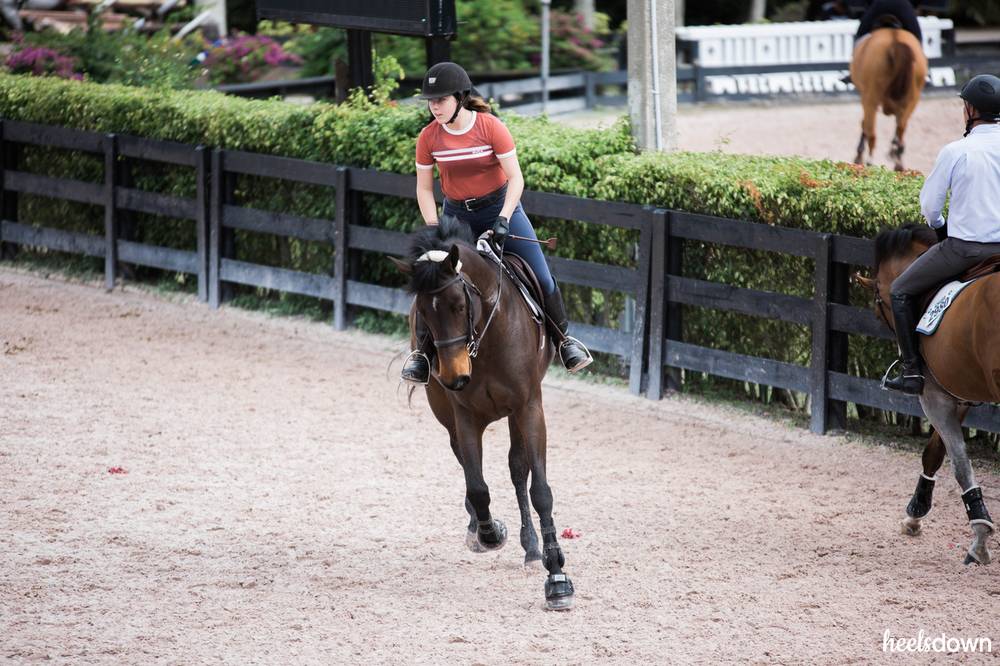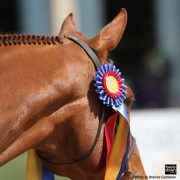How To Get The Most Out Of Your Sluggish Horse

We’ve all ridden them – the types of horses that require so much LEG to go it’s like you’re summoning the devil himself every time to you try to kick him into canter from the trot.
When horses with “more whoa than go” are dead to the leg, it’s easy to want to add artificial aids like a crop and spur to help give them a little more encouragement. But five-star eventer Lainey Ashker said that choice is more often than not a mistake.
“I learned the hard way,” said Lainey, about how to make a sluggish horse more reactive to the aids. “There’s only so much leg you can use. You can add spurs and force, but they will become dead to that, too.”
The key, Lainey says, is to understand how to use your seat as reinforcement to your leg. Lainey says her experience riding classic dressage (as opposed to eventing dressage) helped unlock that important training block for her.
“Training helped me realize my leg can be quiet and loud. But if I move my seat, the horse knows it has to go forward. If I stop my seat, the horse has to slow,” she explained.
Proper use of the seat as a driving aid can be hard to learn and finesse in the beginning. But similar to understanding the intricacies of the half-halt, using the seat to help make a mount more forward can unlock a new level of rideability in the horse.
“I took off my spurs,” Lainey admitted. “You can up the ante all the time, and the horse will answer back to that. But to make the horse more sensitive and not less, you want to add the least amount of pressure and expect them to respond to that.”
But for the type of horse that really benefits from the guidance of an artificial aid like a crop, she said it’s vital that the use of those tools are sharp and concise.
“If the horse doesn’t answer, I make my correction really sharp,” Lainey described. “I use the crop at the dock of the tail as an indication that the horse should be quicker with his hind legs. It’s not about whipping the horse – it’s about getting to reaction to enforce that when I move my seat, they have to go forward.”
A good way to practice using your seat is to incorporate regular transition work into your rides, Lainey said.
“Really play with that. Walk-to-trot transitions are the best and vice-versa,” she explained. “When I squeeze my thighs, does the horse ignore me or does he go into the next gait? That’s a good gauge.”
Another tool is to tie the stirrups to the girth to help riders understand the correct position in order to use their seat and leg correctly.
“Toes should always face inside, never turned out, otherwise the rider is just using the spur or their heels to keep them going,” Lainey said. “In dressage, you should be using your whole leg. By tying the stirrup, you’re taking away the kicking power. If you can’t kick, you’re forced to use your seat.”
The goal should always be to ride as quietly with your aids as possible, Lainey reinforced.
“If you’re loud all the time, the horse is going to ignore you,” she said.


